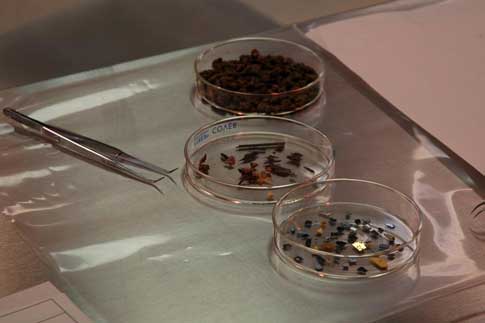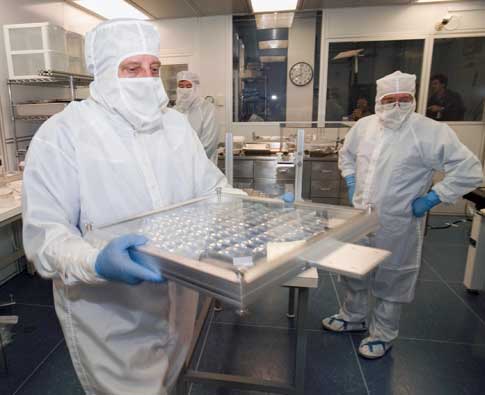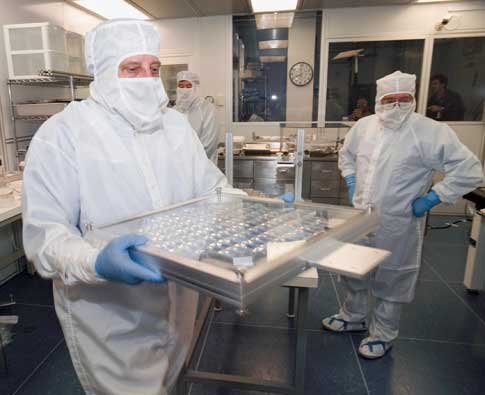The soft landing of the Stardust capsule in January contrasted sharply with the Genesis probe’s crash 16 months earlier. Despite this difference, scientists are busy analyzing the samples each spacecraft returned to Earth.
After a 3-year journey collecting solar particles, Genesis returned to Earth in similar fashion to Stardust. But a failed parachute sent the craft careening into the desert floor at 193 mph (311 kilometers/hour). Delicate collector panels were left in shards, covered with desert debris. “We expected to have 250 samples,” says principal investigator Don Burnett. “Now, we have 15,000 pieces to work with.”
Already, researchers have identified ions originating from the Sun. “There are three kinds of solar wind,” Burnett explains. “The spacecraft was able to move the collection panels in and out to get data from different types. We’ve already analyzed noble gases [helium, neon and argon], as they are not too sensitive to this type of contamination. We want to measure the ratios of isotopes of elements from the Sun’s surface, and we now have direct data. We’re getting interesting and important results even at this early stage.”
After the chaotic events of the spacecraft’s landing, scientists anxiously awaited the release of Genesis samples. Over 100 samples have already been sent to nearly 20 labs around the globe. As Lockheed/Martin’s Benton Clark, an investigator on the Stardust team, says, “We want everybody to know that Genesis is a great success.” After a nearly disastrous return to Earth, the painstaking work of countless engineers and researchers has salvaged the mission. Genesis promises to revolutionize our knowledge of the Sun, the solar wind, and even the beginnings of our solar system.
Stardust samples are already on their way to investigators throughout the world, but the mission’s dangerous touchdown was even more nerve-wracking in light of Genesis’ landing. Last month, Stardust’s return capsule streaked across the sky above the Utah desert and landed gently on a muddy plain. The craft carried samples of Comet Wild 2 and interstellar dust. “The entire sky lit up in a golden-red glow,” says Clark.
He was also in Houston to witness the capsule’s opening at the Johnson Space Center. Tennis racquet-size collectors with aerogel surfaces used one side to collect interstellar dust, while the opposite face was exposed to Comet Wild 2’s coma.
The interstellar dust side was revealed first. “It was absolutely pristine, which one would expect since the particles are thought to be on the order of one micron,” says Clark. But he was more delighted to see the comet side, unveiled 15 minutes later. “You could see big splotches, almost like bird droppings.” By studying comets, which date to the solar system’s formation, scientists hope to understand how the solar system has evolved.












